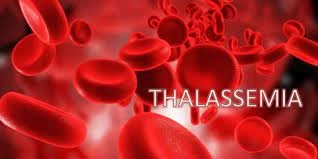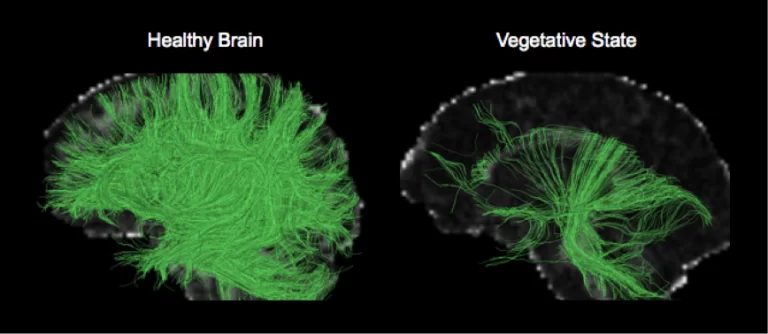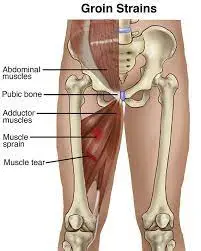Thalassemia
What is Thalassemia?
Thalassemia is a blood disease that is inherited. It has an impact on your body’s capacity to produce normal hemoglobin. Hemoglobin is a peptide that is found in red blood cells. It enables red blood cells to transfer oxygen throughout your body, nourishing other cells.
Your body makes fewer healthy hemoglobin proteins and your bone marrow produces fewer healthy red blood cells if you have thalassemia. Anemia is the state of having fewer red blood cells. Because red blood cells are essential for delivering oxygen to tissues in your body, a lack of healthy red blood cells can deprive your body’s cells of the oxygen they require to produce energy and flourish.
Epidemiology
Alpha thalassemia is dominant in Asian and African peoples while beta-thalassemia is more dominant in the Mediterranean population, although it is relatively familiar in Southeast Asia and Africa also. The majority in these areas may be as elevated as 10%. The true digits of thalassemia-affected persons in the United States are unknown, as there is no useful screening process in place.
What are the types of thalassemia?
Thalassemia is categorized as minor, trait, intermedia, and primary to define how extreme the situation is. These brands represent a range where having a thalassemia trait indicates that you may feel mild anemia symptoms or no symptoms at all. You may not require treatment. Thalassemia major is the most severe form and generally needs regular therapy.
There are two varieties of thalassemia alpha thalassemia and beta thalassemia named after deficiencies in these chains.
Alpha thalassemia
You inherit four genes, two per parent, that create alpha globin protein chains. When one or more genes are impaired, you form alpha thalassemia. The number of impaired genes you inherit will decide whether you feel anemia symptoms and (if so) how extreme they’ll be.
One deficient or missing alpha gene suggests that you won’t feel symptoms. Another name for this disease is alpha thalassemia minima.
Two defective or missing alpha genes suggest that if you feel symptoms, they’ll probably be mild. Another word is alpha thalassemia minor.
Three defective or missing alpha genes suggest that you’ll feel moderate to extreme symptoms. Another name for this disease is Hemoglobin H condition.
Four defective or missing alpha genes generally result in death. In those infrequent examples when a newborn survives, they’ll probably require lifelong blood transfusions. Another name for this disease is hydrops fetalis with Hemoglobin Barts.
Beta thalassemia
You inherit two beta-globin genes, one per parent. Your anemia symptoms and how extreme your state is relies on how many genes are defective and which portion of the beta-globin protein chain includes the defect.
One defective or missing beta gene suggests that you’ll feel mild symptoms. Another name for this disease is beta thalassemia minor.
Two defective or missing beta genes suggest that you’ll feel moderate to extreme symptoms. Thalassemia intermedia is known as the moderate version. More extreme beta thalassemia including two gene mutations is known as beta thalassemia major or Cooley’s anemia.
Symptoms of Thalassemia
Your feeling will rely on the variety of thalassemia you have and how extreme it is.
Asymptomatic (no symptoms)
You probably won’t have symptoms if you’re skipping one alpha gene. If you’re skipping two alpha genes or one beta gene, you may be asymptomatic. Or, you may have gentle anemia symptoms, such as fatigue.
Mild to moderate symptoms
Beta thalassemia intermedia may generate mild anemia symptoms, or it may generate the subsequent symptoms associated with a more moderate condition:
- Growth issues.
- Delayed puberty.
- Bone abnormalities, like osteoporosis.
- An enlarged spleen (the organ in your abdomen that plays a function in fighting infection).
- You may eventually require surgery to fix skeletal issues. Your healthcare provider may require you to remove your spleen if it produces too big.
Severe symptoms
Missing three alpha genes (Hemoglobin H disease) frequently generates anemia symptoms at born and conducts in extreme lifelong anemia. Beta thalassemia major (Cooley’s anemia) frequently leads to extreme anemia symptoms evident by age 2.
Symptoms of extreme anemia contain those associated with gentle to moderate conditions. Additional symptoms may contain:
- Poor appetite.
- Pale or yellowish skin (jaundice).
- Urine that is dark or tea-colored.
- The uncommon bone structure in your face.
Causes of Thalassemia
Hemoglobin consists of four 4 protein chains, 2 two alpha globin chains, and 2 two beta globin chains. Per chain, both alpha and beta include genetic information, or genes, passed down from your parents. Believe of these genes as the code or programming that regulates per chain and (as an outcome) your hemoglobin. If any of these genes are faulty or missing, you’ll have thalassemia.
Alpha globin protein chains contain four genes, two per parent.
Beta globin protein chains contain two genes, one per parent.
The thalassemia you have relies on whether your alpha or beta chain includes the genetic defect. The extent of the defect will decide how extreme your situation is.
Risk factors
Factors that raise your risk of thalassemia contain:
Family record of thalassemia. Thalassemia is passed from parents to kids via mutated hemoglobin genes.
Specific ancestry. Thalassemia happens most frequently in African Americans and patients of Mediterranean and Southeast Asian descent.
Differential Diagnosis
Iron deficiency anemia: This is ruled out by iron analyses and the Mentzer index.
Anemia of chronic condition and renal failure: Raised markers of inflammation (CRP, ESR) point in this approach.
Sideroblastic anemias: These are ruled out by iron analyses and peripheral blood smears.
Lead poisoning: This is ruled out by calculating serum protoporphyrin level.
Diagnosis
Most kids with moderate to extreme thalassemia obtain a diagnosis by the time they are 2 years old. Patients with no symptoms may not recognize they are carriers until they have a kid with thalassemia.
Blood examinations can see if a patient is a carrier of thalassemia or has the disease. Here are the testing procedures doctors use to assist to create a diagnosis:
Complete blood count (CBC): This can inspect hemoglobin levels and the level and extent of red blood cells.
Reticulocyte count: This estimates how quickly reticulocytes, or immature red blood cells, are created and released by the bone marrow. Reticulocytes generally spend about 2 days in the bloodstream before growing into mature red blood cells. Between 1 and 2 % percent of healthy patients’ red blood cells are reticulocytes.
Iron levels: This will assist the doctor to choose the reason for anemia, whether thalassemia or iron deficiency. In thalassemia, iron deficiency is not the reason.
Genetic testing: DNA study will indicate whether a patient has thalassemia or mutated genes.
Prenatal testing: This can display whether a fetus has thalassemia and how hurtful it might be.
Chorionic villus sampling (CVS): A part of the placenta is extracted for testing, generally near the 11th week of pregnancy.
Amniocentesis: Healthcare professionals bring a small example of amniotic fluid for testing, generally during the 16th week of pregnancy. Amniotic fluid is the fluid that covers the fetus.
Treatment of Thalassemia
Common therapies for thalassemia major are blood transfusions and iron chelation.
A blood transfusion includes obtaining injections of red blood cells via a vein to fix normal levels of healthy red blood cells and hemoglobin. You’ll receive transfusions every four months with moderate or extreme thalassemia, and with beta-thalassemia major, every two to four weeks. Occasional transfusions may be required (for example, during times of infection) for hemoglobin H condition or beta thalassemia intermedia.
Iron chelation includes the removal of extra iron from your body. A danger with blood transfusions is that they can generate iron overload. Too much iron may harm organs. If you obtain regular transfusions, you’ll obtain iron chelation therapy (which you can bring as a tablet).
Folic acid supplements can assist your body to create healthy blood cells.
Bone marrow and stem cell transplant from a compatible related donor is the only therapy to fix thalassemia. Compatibility indicates the donor has the same varieties of proteins, known as human leukocyte antigens (HLA), on the cover of their cells as the patient receiving the transplant. Your healthcare provider will infiltrate bone marrow stem cells from your donor into your bloodstream during the method. The transplanted cells will begin to create new, nutritious blood cells within one month.
Luspatercept is an injection that’s provided every three weeks and can assist your body to create more red blood cells. It’s authorized in the U.S. for the therapy of transfusion-dependent beta-thalassemia.
Lifestyle and home remedies
You can assist to control your thalassemia by following your therapy program and adopting healthy-living habits.
Avoid excess iron. Unless your doctor suggests it, don’t bring vitamins or further supplements that include iron.
Eat a healthy diet. Nutritious eating can assist you to feel okay and boost your energy. Your doctor might also suggest a folic acid supplement to assist your body to create new red blood cells.
To maintain your bones healthy, make certain your diet includes sufficient calcium and vitamin D. Ask your doctor what the right quantities are for you and whether you require a supplement.
Ask your doctor regarding bringing further supplements, as well, like folic acid. It’s a B vitamin that assists build red blood cells.
Avoid infections. Wash your hands often and avoid the sick patient. This is particularly essential if you’ve had your spleen removed.
You’ll also require an annual flu shot, as well as vaccines to control meningitis, pneumonia, and hepatitis B. If you create a fever or further signs and symptoms of an infection, visit your doctor for therapy.
Complications
Possible difficulties of moderate to extreme thalassemia contain:
Iron overload. Patients with thalassemia can bring too much iron into their bodies, either from the condition or from frequent blood transfusions. Too much iron can result in injury to your heart, liver, and endocrine system, which contains hormone-producing glands that control functions throughout your body.
Infection. Patients with thalassemia have a raised risk of infection. This is particularly true if you’ve had your spleen removed.
In chances of extreme thalassemia, the subsequent difficulties can happen:
Bone deformities. Thalassemia can create your bone marrow to expand, which generates your bones to widen. This can result in abnormal bone structure, particularly in your face and skull. Bone marrow expansion also creates bones delicate and brittle, raising the possibility of broken bones.
Enlarged spleen. The spleen assists your body fight infection and purifies unwanted material, like old or damaged blood cells. Thalassemia is frequently accompanied by the destruction of a big digit of red blood cells. This generates your spleen to broaden and function harder than normal.
An enlarged spleen can create anemia worse, and it can decrease the life of transfused red blood cells. If your spleen expands too large, your doctor might recommend surgery to dismiss it.
Delayed growth rates. Anemia can both delay a kid’s development and slow puberty.
Heart issues. Congestive heart failure and irregular heartbeats can be associated with extreme thalassemia.
Prevention
In most patients, you can’t control thalassemia. If you have thalassemia, or if you bring a thalassemia gene, consider speaking with a genetic counselor for guidance if you want to have kids.
There is a state of assisted reproductive technology diagnosis, which screens an embryo in its early phases for genetic mutations merged with in vitro fertilization. This might assist parents who have thalassemia or who are carriers of a faulty hemoglobin gene to have fit babies.
The method includes retrieving mature eggs and fertilizing them with sperm in a container in a laboratory. The embryos are inspected for imperfect genes, and only those without genetic deficiencies are implanted into the uterus.
Prognosis
Your outlook will rely on how extreme your thalassemia is. Some patients will have just mild symptoms. For others, it’s more extreme. Extreme thalassemia can conduct to heart failure and early death. But many patients with thalassemia live as long as a patient without thalassemia. New treatments suggest that patients with thalassemia are now living extended with fewer symptoms.
You may also like to examine entering a support group, so you can link with other patients who have the disease.
FAQ
Is thalassemia a serious disease?
Although the main health issues associated with thalassemia can frequently be managed with therapy, it’s still a severe health disease that can have an effective effect on a patient’s life. Even in gentle circumstances, there’s still a risk you could pass on a more severe variety to your kids.
Can thalassemia be cured?
Stem cell or bone marrow transplants are the only treatment for thalassemia, but they’re not done very frequently because of the notable risks included. Stem cells are created in bone marrow, the spongy tissue seen in the center of some bones, and have the capability to evolve into various kinds of blood cells.
How long do thalassemia patients live?
Survival of thalassemia people
The incremental survival rate from born until 10 years aged was 99%. After achieving the years of 20 years, 88% of the people stayed until 30 years, 74% stayed until 45, 68% stayed until 50, and 51% stayed until 55 years aged.
What is the hemoglobin level for thalassemia?
Thalassemia major is indicated by decreased Hb level (<7 g/dl), mean corpuscolar volume (MCV) > 50 < 70 fl and mean corpuscolar Hb (MCH) > 12< 20 pg. Thalassemia intermedia is characterized by a Hb level of 7 to 10 g/dl, an MCV of 50 to 80 fl, and an MCH of 16 to 24 pg.
Can thalassemia cause death?
Extreme thalassemia can generate early death (between ages 20 and 30) due to heart failure. Bringing regular blood transfusions and treatment to extract iron from the body helps enhance the result. Less extreme forms of thalassemia frequently do not shorten lifespan.






